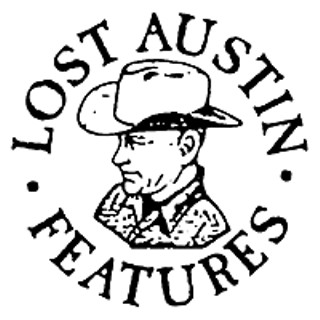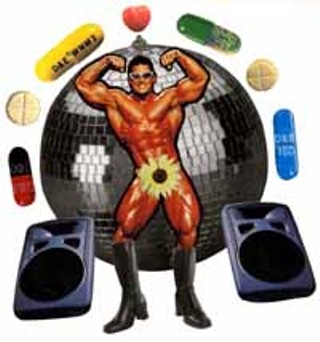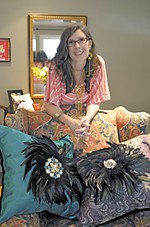Life at the Cha-Cha Palace
Back in the Day, Austin Boogied to a Different Beat
By Stephen MacMillan Moser, Fri., Jan. 26, 2001

It was one of the most schizophrenic eras, but so typical of Austin -- you could begin your night at the legendary Armadillo World Headquarters listening to Greezy Wheels and end it at the disco dancing to ABBA.
I do remember the first time I went to Pearl Street Warehouse in late 1975 -- and it may be one of the last totally clear memories I have of the era. I was in college at ACC and working on a production at Zach Scott and somebody said, "Let's go to the Pearl Street Warehouse." It wasn't my first time in a gay bar -- far from it. I spent a good portion of my midteenage years getting my education at Houston's infamous Mary's Lounge and graduating from the legendary Locker, so I wasn't a neophyte. Pearl Street Warehouse was on the corner of 18th Street & Lavaca; there is a parking lot there now, but with the history embedded in the earth under that asphalt, it's surprising that the cars can keep still.
As a club, Pearl Street wasn't particularly different from many dance clubs, even now -- a long, two-story structure with a bar at both ends, a generous dance floor with a DJ booth overlooking it, and plenty of seating and standing room. It had typical Seventies details, combining cheap art deco with a tropical flavor -- but who the hell cared what it looked like? The music was sublime.
Previously we danced to tunes by Elton John, Stevie Wonder, Rolling Stones, Billy Preston, and Marvin Gaye, but as the Seventies developed an image of its own, music began to change. Disco, as a sensation, was just beginning to take hold in Austin (long before Saturday Night Fever), and was predominantly a gay trend that set the world on fire. Morphing from soul to funk, we began hearing lush orchestrations overlaid with a throbbing beat. Songs by Barry White and Love Unlimited offered an alternate approach to dance music.

That first night at Pearl Street, I was entranced as we danced to the entire A side of Gloria Gaynor's album, with "Honeybee (Come On and Sting Me)," "Reach Out, I'll Be There," and "Never Can Say Goodbye." Not only were the songs extremely long, but they blended into each other for seamless segues. It was, by most accounts, the first real disco record, and she followed it with "Walk on By" ("They say the eyes are the windows of the soul ..." she hissed, and I was mesmerized). Then came along a little song called "Love to Love You, Baby" engineered by electronica genius Giorgio Moroder, and the fate of dance music was sealed. The song skyrocketed into musical history with a 16-minute running time, and contained the sounds of a reported 20 multiple orgasms. It was recorded by Donna Summer -- one of the true disco divas, whose very name still conjures up disco delirium.
But Pearl Street -- or PSW, as it was alternately called -- was only the stage, and the music was only the soundtrack -- the drama occurred both on and off the dance floor. The Stonewall rebellion in New York City had happened a scant seven years before, and the gay scene had transformed into "The Cult of the Night," as Anthony Haden-Guest calls it in The Last Party, his seminal account of the New York disco scene. The club and its denizens took the nightlife very seriously and "More, More, More" from Andrea True, the porn princess-turned-one-hit wonder, became an anthem. I quickly fell in with three other queens who lived across from me on Leon Street, shacked-up in a one-bedroom apartment ($150 a month!) that was wall-to-wall beds. Along with their four roommates (seven people in a one-bedroom apartment!), they barely seemed to work and barely seemed to be in school -- sleeping late from staying out all night and spending the afternoon getting ready to do it again. Often starting the evening at the Apartment Lounge (which later became the Austin location of Houston's legendary Dirty Sally's), Donny, with his enormous mushroom-shaped afro, Chip, with his perfect white Farrah-hair, and Jeff, with his wild gypsy shag, and I often had to scrape up enough money for Nickel Beer Night, before heading to the disco for 50-cent tequila shots. Once there, anything could happen, and did.
The DJs were the primary entertainers, both in the DJ booth and out -- Casey Jones and his entourage showed up at Pearl Street one night, decked out in one-piece bathing suits and high heels, waded into the crowd on the dance floor, spread out blankets and chaise lounges on which they posed beneath an umbrella with their piña coladas, and applied suntan lotion to each other. But the music was paramount. Casey played a mean turntable and, among his peers of the time, pioneered the mixing and overlaying of records that has since become a nightclub art. I spent so much time hanging around the DJ booth requesting songs, that one of the DJs, Doug, became my roommate, and then I had about as much disco as I could dream of. It was he who gave me the opportunity to play Florence Ballard to his Diana Ross, as he and my friend Craig and I performed "Ain't No Mountain High Enough," moving in unison and flailing our arms at the captive audience on Pearl Street's dance floor.
At the back of the dance floor was a set of stairs leading to the lower bar and the bathrooms -- the stairs proved treacherous to many queens in platform shoes who had had a wee drinkee of too much good corn liquor. It was easy to wind up in a heap on the floor. I know. When Donna Summer released "I Feel Love," a new approach to music and dance was blossoming, and electronica became pop. The sound was different -- not too much, I thought, but my boyfriend thought differently. When he went to our table in disgust, I spun on my platform shoes and stalked off the floor in a snit -- and promptly fell down the stairs, landing in a heap on the floor in front of the bathroom. The bathroom was where I wanted to be anyway -- nightclub bathrooms were the scenes of many of my teenage experiences, and from laughter and tears to drugs and sex, it is where most of the drama occurred. But, true to the nightclub tradition at the time, new cha-cha palaces, with bigger and better dance floors and bigger and better bathrooms eclipsed Pearl Street.
ABBA's "Dancing Queen" was splitting the darkness, then the lights went wild and the inevitable disco delirium had set in for another night. It was spring of 1977, and I stood at the top of the stairs at Friends & Lovers and watched with venom in my throat as Roger, the man of my dreams, was dancing with someone else -- someone much younger than me, and I was only 19. In fact, the queen he was dancing with, Xavier (the name still makes my skin crawl), was 17, just like the dancing queen in the song. I flew over to the DJ booth where Casey Jones was playing records. "Please, please can you play 'Could It Be Magic' for me?" I knew if the DJ would only play "our" song, Roger would ditch that chicken and "... comeí comeí come into my arms." It did not happen, and I moved on to bigger and better boyfriends.

(Courtesy Stephen Macmillan Moser)
Previously a cavernous old theatre, Friends & Lovers on Sixth Street had been the latest brainchild of Marcilea Fletcher -- a larger-than-life figure in outrageous hats with a retinue of genetically perfect minions at her beck and call. Its most recent incarnation has been Inferno, and it's currently called Limelight, but Friends & Lovers would reign supreme during a time when nightclubbing still had a certain innocence and drugs were still fairly recreational.
That drugs were an inherent part of the disco experience is inarguable. Drugs and dance music have gone hand-in-hand since the Roaring Twenties, and an altered consciousness always facilitated the passage into disco nirvana. It was possible to become lost in the crowd, lost in the drugs, and lost in the music. The high, usually some combination of crystal, amyl nitrate, pot, and alcohol, let the music enter the bloodstream as surely as a drug, conjuring up a communion of souls that was somewhere between taking the sacrament and snake-handling. There were holy songs that made it like church: "Deliverance" by Space and Arpeggio's "Love & Desire" were trance-inducing -- a trance that became pure ecstasy when we'd hear the DJ mixing in the opening bars of the song that would bring us to our knees, Thelma Houston's "Don't Leave Me This Way." At the end of the night, we'd be lifeless bodies propelled through the walking motions by an unknown force that took us home. Or at least as far as Flapjack Canyon (on a corner that no longer exists at what was then 19th & Guadalupe), where, if we hung out long enough, the bartenders and other club personnel would begin arriving and the party would begin again. Who wanted to go home?
On the other hand, Friends & Lovers was home. We spent more time there than anywhere else, and almost hated seeing strangers there. For better or for worse, the staff became almost a surrogate family. Cultivating a satisfying relationship with a bartender was always a good idea. I was familiar enough to scream at Renee, the transvestite coat check "girl," when she had been so stupid to have inadvertently given away my shoulder bag to someone else, when she knew it was my bag -- and with it went all my make-up, a full bottle of Diorissimo perfume, a palmetto fan, a bottle of poppers, and a bag of pot. Devastating. Friends & Lovers is where my sister and I went after the Armadillo Mardi Gras Party in 1977, dressed as Nurses From Outer Space. It is where we repaired to celebrate after the 1977 Rocky Horror contest at which I was robbed of first place in the Dr. Frank N. Furter look-alike contest. That had been a glorious evening of fun celebrating the amazing fact that The Rocky Horror Picture Show had run as a midnight movie for two years straight. The costumes of all the attendees were fabulous, especially mine. But, first place or not, I definitely ruled the dance floor later that night, lip-synching "I'm Just a Sweet Transvestite" on the stage of Friends & Lovers, and dancing the "Time Warp." The stage area had a back door to an alley, which could be convenient for sneaking in someone without ID, and the alley was the scene of many dramas, including my first arrest: getting busted for pot with my best friend Craig, a whiney, whey-faced ninny, and Albert, a beautiful but bitchy prima donna, whom we called "La Princessa de Coahuila." We could still hear schoolteacher-turned-one-hit-wonder Anita Ward shrieking, "You can ring my be-eh-ellll, ring my bell ..." as we were carted off to spend the night in jail, wasting perfectly good disco outfits on a bunch of criminals and cops who made fun of us. We had foolishly imagined we'd be out in time to return to the Friends & Lovers for last call. We weren't. But we were certainly back at the club the next night in time to watch the cigarette "girl" Lorraine dance her Spring-a-latored feet off to Ethel Merman's disco version of "There's No Business Like Show Business" and the disco I Love Lucy theme.
![]()
Grooming oneself for the disco was always an arduous task ("Flowers or jewelry, but not both," I remember advising my sister), and toward the end of the decade, it became downright byzantine, with perms, scarves, fans, whistles, and Annie Hall glasses becoming de rigueur. High disco, as a phenomenon, had crested, and by 1979, the times were a-changin' again. Punk and New Wave were in the air, and the club DJ was just as likely to play Blondie or the Police as they were to play the Bee Gees or the Village People. Raul's on Guadalupe (now the Texas Showdown) reigned supreme alongside of Tex's Colorado Street (where Polly Esther's is now). But the innocence was melting away and instead of "Shake, Shake, Shake," we were listening to Marianne Faithfull growling, "Why d'Ya Do It?" and Patti Smith saying it was "Because the Night." For me and my cohorts, the Cult of the Night had transformed into the pursuit of what we crudely called the Three Ds: drugs, disco, and dick. It would remain in effect throughout the rest of my disco career, some 10 years later. Tex's was the perfect place for that pursuit -- a platform from which to act out our sordid and misguided fantasies. There were multiple venues within for practicing S&M ... which we understood to mean either Stand & Model or Sequins & Mascara. My sister, her husband, and I, along with our entourage, made our requisite appearance after attending an All-White party dressed as a team of nurses from Parkland Hospital in Dallas; I, of course, was dressed, not in white, but as Jackie Kennedy in a pink Chanel suit splattered with blood and brains. We led the club with "interpretive dancing" to Donna Summer's "The Wanderer" and "Private Idaho" by the always-popular B-52's. Around the same time was a magic night when disco-diva Viola Wills played at Tex's -- she was riding high on the original dance version of "If You Could Read My Mind" (shamelessly copied for the movie 54), and as she stood on the balcony overlooking the adoring mass of humanity below her, she outstretched her arms and launched into the dance version of "Don't Cry for Me Argentina," turning the bulk of Austin's gay community into putty in her hands.
Throughout all of this, there was the Austin Country -- it was where to go on the rare occasions when the discos became wearying, but we still needed the sustenance of the night. More like a corrugated lean-to on Red River that now houses the Atomic Cafe, the Country wasn't really a disco, per se, but almost a classic show bar hosting many events and drag shows. While it had a sizable dance floor, it wasn't dedicated strictly to disco music. You were as likely to hear Judy Garland singing "The Trolley Song" and Tammy Wynette singing "Stand by Your Man" as you were to hear "Uptown Festival" by Shalimar. It was also open earlier and catered to a crowd of drinkers who often just sat back and observed as the Cult of the Night took over. Run by the beloved Bunch Britton, the Country was not swayed by the trends, but catered to some of the more traditional gay bar denizens whose night might begin at 10am. It was where I saw an unparalleled performance by a physically challenged drag queen named Apple Love who wore a leg brace under her evening gowns. She'd clank onto the stage in the dark, perform Barbra Streisand's "How Lucky Can You Get?" and clank off, leaving the irony of the song running through your mind. For existing in a fickle sub-society where looks were everything, it took incredible courage for this aging, balding, and crippled queen to drag herself onstage in front of a notoriously insensitive crowd and let them know how lucky she felt. Lucky, indeed.
"They" say that disco died at the end of the Seventies, but millions of people across the globe would disagree. "How could disco be dead," says Haden-Guest in The Last Party, "when its greatest star [Madonna] hadn't even had her first hit yet?" And he's absolutely correct. Though AIDS (remember when it was called GRID or Gay Cancer?) took a heavy toll on the party scene, it added an even greater desperation to the party-till-you-puke Eighties. The plague slaughtered our friends before our very eyes and decimated the disco population -- but there was already a New Wave in effect that lit up the nighttime skies through the end of the Eighties. But with the death of New Wave, the energy and spirit that kept the night pulsating with the fevered pursuit of nightclub nirvana also died -- and along with that went the huge cha-cha palaces that were the altars upon which we worshipped -- a long-ago religion that was another part of history and another part of Lost Austin. ![]()
Stephen MacMillan Moser begs the readers' indulgence for any inaccuracies, and hastens to remind us all "what a long, strange trip it's been."








